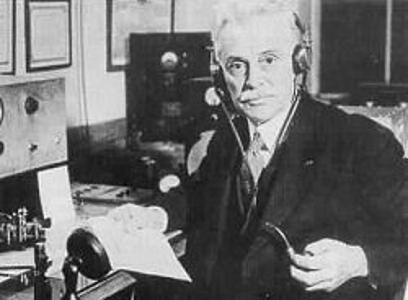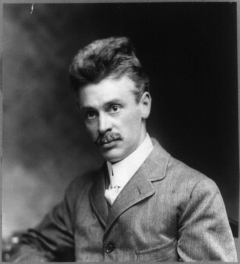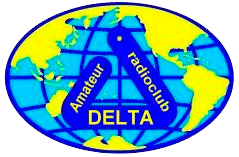ARRL – 100 лет!
Георгий Члиянц (UY5XE)
18 мая 1914 г. была создана Американская радиолюбительская лига (ARRL) и её первым президентом был избран Hiram Percy Maxim (u1AW; ранее - 1WH) [1869-1936].
Официальный сайт лиги: http://www.arrl.org/


Первый президент ARRL был сыном изобретателя легендарного пулемета "Максим"
Further information from the site http://en.wikipedia.org/wiki/American_Radio_Relay_League
 In 1914, Hiram Percy Maxim of Hartford, Connecticut, was a prominent businessman, engineer, and inventor (notably of the Maxim Silencer). He was also an active radio amateur, with one of the best-equipped stations in the Hartford area. One night in April he attempted to send a message to another ham in Springfield, Massachusetts. He had a one-kilowatt station (call 1WH), and Springfield was only 30 miles (48 km) away, well within his normal range. He was unable to make contact, and remembering that he knew another ham in Windsor Locks, about halfway, he contacted the Windsor Locks ham, and asked him to relay the message, which was successfully done. This was not the first time a message had been relayed, but it set Maxim to thinking. At that time, a great deal, perhaps most of amateur radio activity consisted of sending and receiving messages, not only between amateurs, but involving the general public as well. But at that time the maximum reliable range of a station was a few hundred miles or less, and so Maxim realized that a formally organized relay system would be of tremendous use to amateurs.
In 1914, Hiram Percy Maxim of Hartford, Connecticut, was a prominent businessman, engineer, and inventor (notably of the Maxim Silencer). He was also an active radio amateur, with one of the best-equipped stations in the Hartford area. One night in April he attempted to send a message to another ham in Springfield, Massachusetts. He had a one-kilowatt station (call 1WH), and Springfield was only 30 miles (48 km) away, well within his normal range. He was unable to make contact, and remembering that he knew another ham in Windsor Locks, about halfway, he contacted the Windsor Locks ham, and asked him to relay the message, which was successfully done. This was not the first time a message had been relayed, but it set Maxim to thinking. At that time, a great deal, perhaps most of amateur radio activity consisted of sending and receiving messages, not only between amateurs, but involving the general public as well. But at that time the maximum reliable range of a station was a few hundred miles or less, and so Maxim realized that a formally organized relay system would be of tremendous use to amateurs.
Maxim was a member of the Radio Club of Hartford, and he presented a plan for the organization of an "American Radio Relay League" (he had already decided on the name) to the club at its April 1914 meeting. The club agreed to sponsor the development of such an organization. Maxim and Clarence Tuska, the secretary of the Hartford Radio Club, developed application forms and sent them out to every amateur station they could think of. Although they limited membership to highly qualified amateurs only, the response was tremendous. By September 1914 they had over 230 stations on the roster.
In early 1915, disagreements began to surface as to the role of the Hartford Radio Club in the new organization, and in February the ARRL split off from the club and incorporated under Connecticut law. Finances were shaky, and most of the income came from sales of booklets, maps and message blanks. But the ARRL kept growing. By March 1915, there were 600 stations on the roster, and due to improvements in equipment and operating ability, some of the better stations were claiming communication ranges of up to a thousand miles. It was apparent that the ARRL now needed some kind of bulletin to stay in touch with its members, but there was no money for such a thing. Maxim and Tuska agreed to personally finance it, and in December 1915 the first, sixteen page issue of QST was sent free to all members. Further issues would be supplied through subscription at $1.00 per year.
In 1916, with ARRL membership nearing a thousand, Maxim set up six trunk lines of relay stations, both east-west and north-south, and individual managers were appointed. Messages were now being relayed over longer and longer distances, and in February 1917 a message was sent from New York to Los Angeles and an answer received in one hour and twenty minutes.
Also in 1917, the ARRL was reorganized. Up to that time it had been run entirely by Maxim and Tuska, but it was time for a more formal organization. A constitution was adopted, twelve directors and four officers were elected (including President Maxim and Secretary Tuska), and membership was opened to anyone interested in radio. No sooner had this happened than all amateurs received a letter from the Department of Commerce ordering them off the air and to dismantle all antennas, because the USA had just entered World War I.
During the war the ARRL facilitated the recruitment of amateurs into communications positions with the armed services, but had little else to do since all civilian experimentation with radio equipment was prohibited. In November 1918 the Armistice was signed, but at the same time, Congress introduced bills to put all radio operations in the United States under control of the Navy. The ARRL strongly opposed the bills, of course; Maxim testified before Congressional committees and the League organized an effective grass roots campaign with thousands of individuals contacting their congressmen in opposition. The bills were defeated, and in April 1919 amateurs were permitted to put up antennas again, but only for receiving.
Meanwhile, the League needed reorganization. With the long lapse in activity, the ARRL now had exactly $33 in the treasury. A privately financed, four-page miniature issue of QST was produced announcing the re-organization, and applications began to come in. A financing plan consisting of selling bonds to members was adopted and about $7500 was raised. QST was purchased from its owner, Clarence Tuska. ARRL continued to lobby Congress for the resumption of transmitting privileges, and after a number of protests and appeals, amateur radio was fully restored in November 1919.

